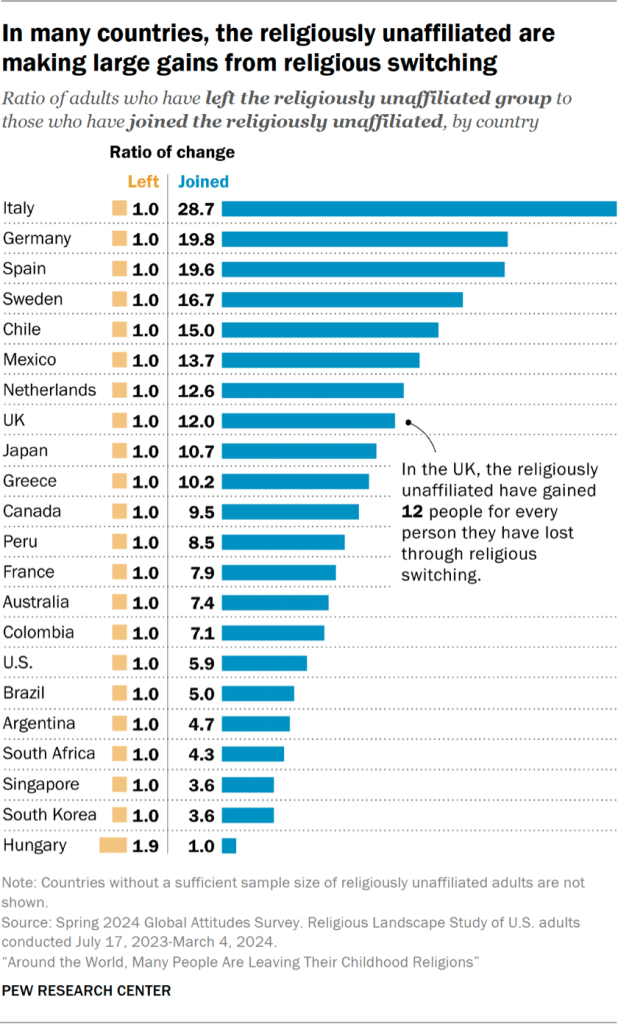(ZENIT News / Rome, 04.03.2025).- Across the globe, a quiet yet profound transformation is reshaping the religious landscape. In many countries, a significant portion of adults no longer identify with the faith in which they were raised. This trend, driven by personal reflection, cultural shifts, and changing societal norms, is particularly evident in Christianity and Buddhism, both of which have seen considerable losses. Meanwhile, the number of individuals who claim no religious affiliation has surged, highlighting a broader global movement toward secularization.
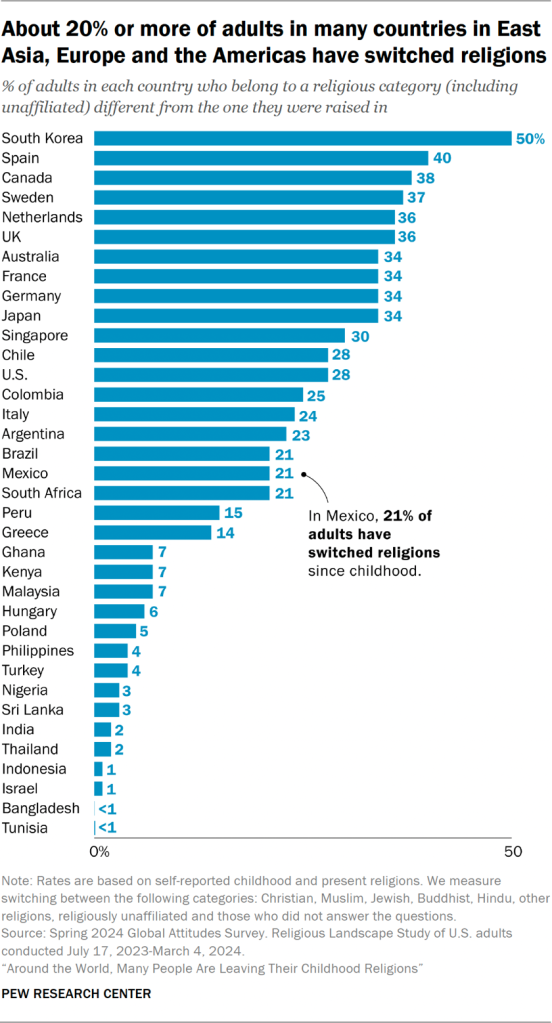
The Nature of Religious Change
Religious identity is not as static as it once seemed. Traditionally, faith was often passed down through generations, with minimal deviation. Today, however, a large number of adults worldwide report having left their childhood religion behind. This transition is not limited to conversion from one religion to another but often involves moving away from religious affiliation altogether.
In some regions, such as India, Israel, Nigeria, and Thailand, religious stability remains strong, with over 95% of adults continuing to identify with the faith they grew up in. However, in parts of East Asia, Western Europe, and the Americas, religious shifts are far more common. For example, nearly half of adults in South Korea (50%) and over a third in the Netherlands (36%) and the United States (28%) no longer adhere to their childhood religion.
The Rise of the Religiously Unaffiliated
One of the most striking aspects of this shift is the rapid growth of those who identify as religiously unaffiliated—often referred to as “nones.” This category includes atheists, agnostics, and individuals who simply do not associate with any particular religion. Many of these individuals were raised in Christian or Buddhist households but have since disengaged from organized faith.
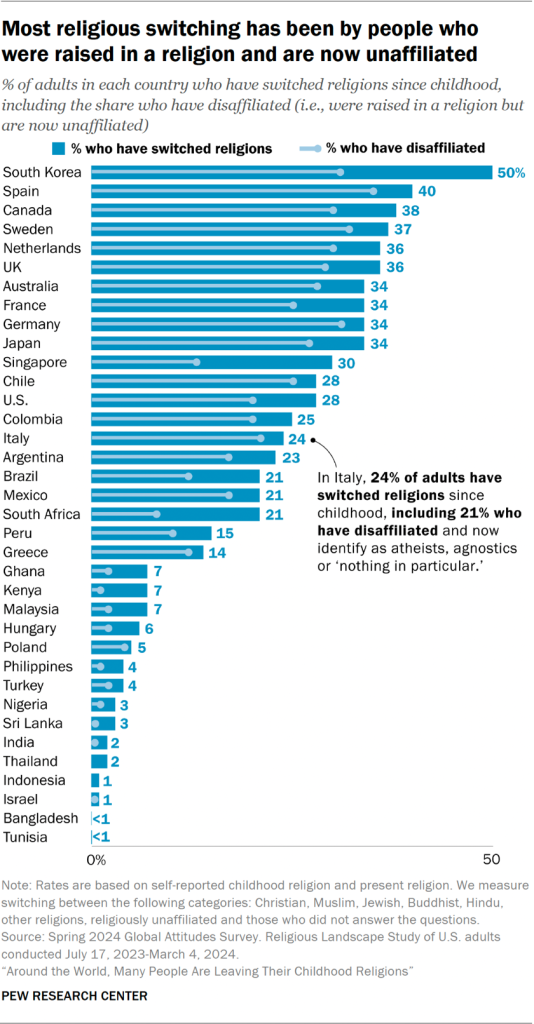
In Sweden, for instance, nearly 30% of adults raised as Christians now classify themselves as atheists, agnostics, or “nothing in particular.” A similar trend is seen in Japan, where a significant portion of former Buddhists no longer claim any religious identity.
However, the movement is not entirely one-directional. In some cases, individuals who grew up without a religious affiliation have later embraced faith. South Korea, for example, has the highest rate of people who were raised without religion but have since joined one, with Christianity being the most common choice.
Which Religions Are Gaining and Losing the Most?
While Christianity remains the world’s largest religion, it is also experiencing the highest rates of attrition. In countries like Germany, for every 20 people who leave Christianity, only one person converts to it. In contrast, certain regions, such as Singapore, have seen small but notable increases in Christian adherents, with approximately three new converts for every person who leaves the faith.
Buddhism, too, is experiencing significant losses, particularly in Japan, Singapore, and South Korea. However, its rate of decline is not as steep as that of Christianity. In Japan, where Buddhism has traditionally been dominant, nearly 12 individuals leave the faith for every one person who joins.
The group experiencing the most substantial growth is, unsurprisingly, the religiously unaffiliated. In Italy, for instance, for every person who was raised without religion but later embraced one, nearly 29 people move in the opposite direction, abandoning the faith of their upbringing.
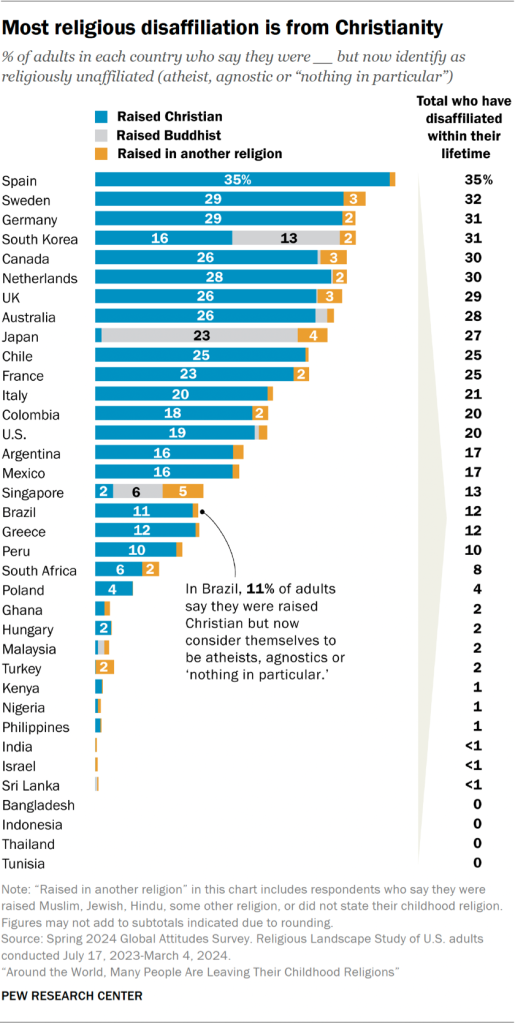
Age, Education, and Gender: Who Is More Likely to Change?
Religious shifts are not uniform across demographics. In many countries, younger generations are leading the movement away from organized religion. In Spain, nearly half (48%) of young adults aged 18-34 report having changed their religious affiliation, compared to just 36% of those over 50. Similarly, in Colombia, young adults are more than twice as likely to have changed their religious identity than older generations.
Education also plays a role. In nations like the Netherlands, people with higher education levels are significantly more likely to have changed religions. More than 40% of Dutch adults with advanced degrees have altered their religious identity at some point, compared to just 29% of those with lower education levels.
When it comes to gender, men are generally more likely than women to disaffiliate from religion, although in most countries, the difference is not dramatic.
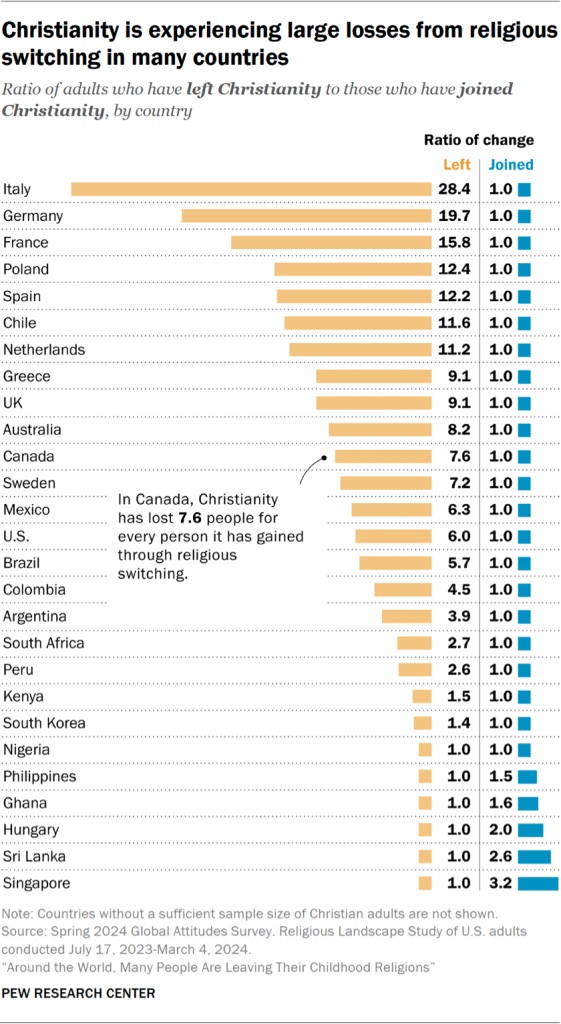
A Global Shift or a Temporary Trend?
The widespread movement away from religious affiliation raises questions about the future of faith worldwide. Are societies becoming increasingly secular, or will some individuals return to religious practice later in life? While some research suggests that people often become more religious with age, the sheer scale of religious disaffiliation in many countries indicates a broader cultural shift rather than a temporary phase.
Complete study here.
Thank you for reading our content. If you would like to receive ZENIT’s daily e-mail news, you can subscribe for free through this link.
